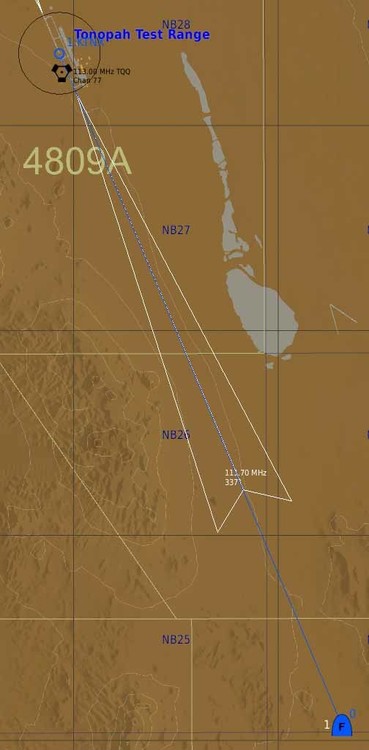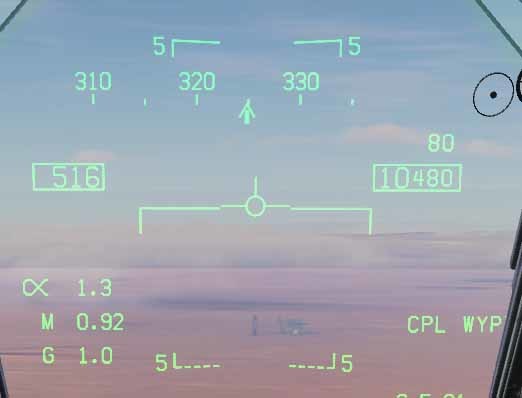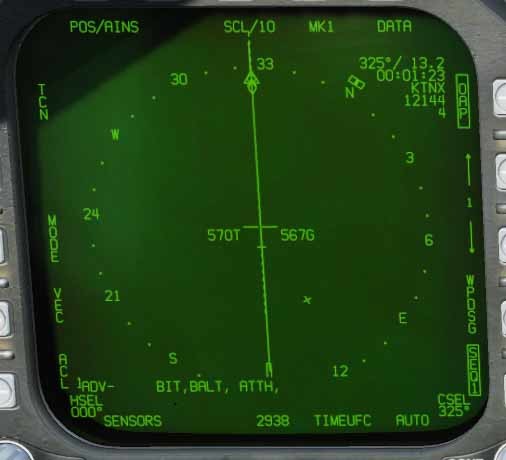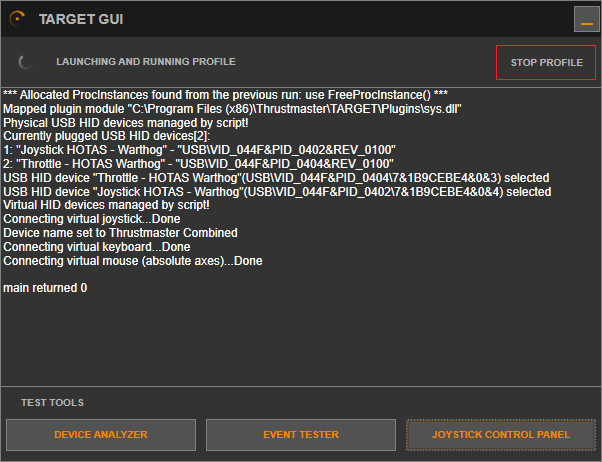-
Posts
42 -
Joined
-
Last visited
About 1Wolf
- Birthday 01/22/1971
Recent Profile Visitors
The recent visitors block is disabled and is not being shown to other users.
-
Does SSAA work in VR? The description of the option talks about a large GPU demand. I was doing some VR testing and ran some benchmarks with MSAA set to x2. So then I turned SSAA to 1.5x as well and re-ran my test. I was surprised that the results were within margin of error. I did some searching here on the forums and here and there I read reports that SSAA does not work in VR. This would make sense with the results I was seeing. However, those threads were a couple years old and so I wanted to post here and make sure this is still true. I had recently picked up a 4090 so I have a little more horsepower to play with and was deciding which options I would turn up. I'd always had SSAA, SSAO, and SSLR off so I was doing some experimenting. Also, does anyone here run VR with any of those 3 options on (SSAA, SSAO, SSLR)? Just wondering what they do in VR, if anything? I tried SSAA with the results described above. I couldn't tell whether it was actually doing anything or it was my imagination. The fact that my benchmark results didn't change makes me believe it was just placebo effect and it doesn't do anything. I tried SSAO and, while I've read the description on what it does, I'm not sure what to look for in VR. That was a pretty decent frametime hit though. Is anyone seeing anything in VR that is worth a 10% frametime hit? (Thats what the hit is for my system). I tried SSLR and was not flying a P-51 with shiny aluminum wings or anything, so I'm not sure what else it might effect in VR that I'm not seeing? Thanks!
-
Thanks! At least now that I know that they are unreliable I won't be constantly fiddling around with them trying to figure out what the heck I'm doing wrong. Thanks!
-
Thanks. That explains the approach plates. I'm assuming DCS includes Nevada area approach plates that were published at various times, and therefore, some are more accurate than others. I set up approaches at several airports with included approach plates and found that some were accurate, some were not. So you're explanation makes sense. The offset waypoint issue still seems wrong though. In those screenshots I included I set up offset waypoints using both True bearing and magnetic and neither of them appeared where I think they should have (Unless my understanding of the way the offset waypoints works is wrong, which is entirely possible).
-
Thank you. That cleared up some of my confusion. The True vs. Magnetic was definitely confusing me. However, I am still a little confused about a couple things. I've included some screenshots to help illustrate my question. I've setup a Hornet to be 18nm out from TNX on approach to RWY 32. You can see the ILS feathers label the true course to the runway as 337. Here you can see from the HUD of the Hornet. Flying a magnetic course of 325 right down the runway. The approach plate lists the approach course as 321. Below is a screenshot of the HSI from the Hornet on approach as above. Note that I have a course set to 325 and the hornet is right on the line. I also have an offset waypoint set to 18nm on a MAGNETIC bearing of 145 (325 - 180 = 145) so the offset waypoint should be right on that line. Its not. Its way off to the right of the HSI. So then I tried setting the offset waypoint to 18nm on a TRUE bearing of 145 (325 - 180 = 145) and that one was way off too. So I guess I just have 2 questions. 1) For the runway course, is it the approach plate or the runway orientation in DCS that is off? 2) For the offset waypoints, is that a known bug? One of those offset waypoints should have ended up on that course line.
-
Are there known issues with the Hornet's accuracy regarding course and waypoints? I was playing around with with the Course selection knob, offset waypoints, and various instrument approaches on the NTTR map around the Tonopah Test Range airfield and I was really getting "weird" results. I'm a little confused so I thought I'd ask. If I reference the approach plates provided for the Tonopah Test Range field the ILS approach is course 321/141. However, the ILS feathers on the DCS NTTR map are 157/337. Ok...at this point I was assuming that either the included approach plates or the ILS feathers on the DCS NTTR map were wrong. So then, in the mission editor I set a waypoint dead center of the runway and measured out exactly 18nm in a straight line and the course to the runway was indeed 157/337 on the map. So I set another WP there at 18nm southeast on the 157/337 approach course. I hopped in the hornet and I pulled up the waypoint for the field. I set a course off the waypoint of 337/157 in the hornet and was surprised to find that the course line was off considerably. I expected it to pass right through that waypoint I set on the 157/337 approach course. I had set a waypoint 18nm in a straight line 157 from the airport and then, in the hornet, set a course of 157 off the airport waypoint and I expected the line to pass through the waypoint and it didn't. I started moving the course knob until it lined up with the waypoint line and it was closer to 325 instead of 337. So then I set an Offset waypoint 18nm on a bearing of 157 from the airport waypoint. Once again, that was yet in a different spot. So, in summary, I set a waypoint in the mission editor exactly 18nm course 157 from the airport, a course of 157 through the airport waypoint in the hornet, and an offset waypoint from the airport to bearing 157 and distance 18nm. I expected them all to be at least close and they weren't. Also, is it normal for the included approach plate ILS course to be that far from the DCS NTTR ILS course? Maybe I'm just misunderstanding these things in the hornet or DCS or maybe there are a series of known accuracy bugs that I wasn't aware of. Thanks
-
As a workaround, I wonder how difficult it would be to simply create some sort of start/stop recording functionality and have it save it off into separate track files. BigNewy and others say that your best bet is with short tracks. So I wonder if it would be a simpler stopgap solution to simply allow the player to start/stop recording and save at will so that just as you get into a situation you might like to view later you can hit the record key combination, then as soon as its done hit the "stop/save" key combo and save that off as file01.trk. Then later in that same mission you encounter something else you think you might like to view, and once again you hit the record key combo to start recording and a couple minutes later when that situation is resolved you press the "stop/save" key combo and it saves a file02.trk. Then you can go back and look at a bunch of smaller/shorter replays that have a higher percentage chance of being correct. If that were a possible stopgap fix that didn't involve rewriting the whole thing, I'm sure that would help almost everyone from content creators to just those who'd like to learn from the dogfight they just finished.
-

Looking for Rudder Pedal Recommendations
1Wolf replied to 1Wolf's topic in PC Hardware and Related Software
Thanks to everyone for sharing your advice & opinions After reading the opinions and advice above, and researching the websites, & some YouTube videos, at this point I'm torn between the MFG Crosswind and the Thrustmaster TPR, and perhaps leaning slightly towards the TPR. I could still go either way though. Its a tough one. I like to fly almost everything - DCS Jets and WW2 warbirds, I plan on starting to learn DCS helicopters, and MSFS 2020 General Aviation aircraft. I prefer as much realism as I can get with my desk setup so I often lean towards whichever solution will make the least realism compromises for various aircraft types but still work with my desk and not require a full sim pit. I love what I'm reading and seeing about the MFG with regards to the mechanicals, the quality, the adjustability, and the damper mod. The only things I don't like are it seems a pity to have to pull of those beautiful foot pedals to replace them with a piece of plastic for a foot pedal. That just seems a waste. Also, it will likely require a board in front of the pedals for my desk setup like I have to use with my Saitek Combat pedals currently to keep them from sliding forward. Moving the pressure from a "downward" pressure if I were using the foot pedals to a "forward" pressure with my heels on the floor will probably make them slide without support. I also fear they might "rock". However, the sliding issue is certainly fixable with a board behind it. The use of the damper and the adjustability makes it seem like that unit would be most adaptable to realism in multiple types of aircraft. That damper seems to be one of the largest points that make me lean towards the MFG. The Thrustmaster TPR unit is certainly more expensive but I can stretch my budget a bit if they are worth it. All the reviews I read talk about how solid they are so perhaps I won't need a board behind them anymore for support. I like the "design" because aircraft generally have the pedals extending downwards from beneath the dashboard/bulkhead instead of attached to the floor. They are designed to accept the forward and backward pressure of heels-on-the-floor use so thats definitely a positive. They are all metal and solid so thats also a positive. I know that they are adjustable, however I don't know if they are *AS* adjustable as the MFG unit and I don't think there is any sort of damper available so thats a huge negative for me. I really like the idea of the damper and some quick googling shows that there are some home-cooked mods I could do with it for a damper, but it would be nice to be able to buy something that is easy to install and fast. -
I've been using my Saitek Combat Rudder Pedals (The metal ones) for many years now. They have worked well and actually been pretty sturdy. However, I've noticed that they can get a bit "jittery" with the toe brakes when rolling out after a landing, and sometimes they don't seem to calibrate very well. Regardless, they still work pretty well. However, being the holiday season is coming, I was entertaining the idea of maybe asking Mrs. Claus (i.e. the Wife) for some new Rudder Pedals. Budget is $400-$500ish. As far as style, in my own definition there are two styles of rudder pedal. Those that have these flat "pedals" that you place your entire foot on. They often have a "cup" that your heel sits in and they actually sit mostly parallel to the floor. The other style is like my Saitek Combat Rudder pedals where your heels sit on the floor and you can operate the "bar" part of the rudder pedal with the balls of your feet. The toe brakes are a separate "pedal" that extends above the bar and you have to physically lift your feet up to press the brakes. Of the two styles, I prefer the later by alot. I find the "flat pedals" style uncomfortable. I fly mostly jets but am looking forward to start learning helicopters someday in the not-too-far future. While I have alot of experience with fixed wing aircraft, I have absolutely no experience with helicopters. I've heard alot of pedals mentioned when researching threads here: Those Saitek pedestal ones, a brand named "MFG" which I'm not famliar with, and others. What would you recommend? Are there any accessories I should get for them at the same time? Thanks!
-
@speed-of-heat Thanks SOOOO much for going to all the work, and effort of all of that testing, sharing your methodology, sharing your results, and above-all-else...keeping this thread alive and keeping them updated. Only a few months ago I built a new system so that I could run in VR, picked up a Reverb G2, and got back into DCS again when I'd been away a while. You're thread helped me immensely. For me at least, the G2 and DCS were a bit tricky to get set up to run together correctly and a bit difficult to understand. It was confusing as hell for me. Once I was up and running I used the methodology and tools you shared to create my own benchmarks so that I could find what worked for me and my system. Thank you again for all the hard work. Question regarding FSR: I don't tend to run many mods but the performance that people are claiming of FSR seemed worth the effort for me to give it a try. I'm a novice at understanding the way things are rendered in VR. So after reading the GitHub entry for it online and the readme information, I just wanted to see if I'm understanding this correctly. So [b]without[/b] FSR you normally run SteamVR CRM for DCS at 80%. [b]With[/b] FSR you run Steam VR CRM for DCS at 100% but have the openvr_mod.cfg set to a RenderScale of 0.8. Isn't that pretty much the same thing as running SteamVR CRM for DCS at 80% and not running FSR? Is it that FSR does the same thing that SteamVR would be doing...only better or more efficiently? What would happen if you set SteamVR for DCS to 100% and the RenderScale to 1.0? I tried using your openvr_mod.cfg settings exactly...setting RenderScale to 0.8, Sharpness to 0, and Radius to 0.75. I didn't run a scientific test yet as I was just trying it out but the performance does seem better. However, things do look a little more blurry. I'm testing this in the Viper and the instruments look just a little bit more blurry, looking at vehicle targets with the targeting pod camera look just a little more blurry. The terrain details in the Nevada desert look just a little more smooth and blurry. Don't get me wrong, nothing is "too blurry", its very subtle. I just noticed that things seem a little more clear without the FSR. Is that due to the "Sharpness" setting in openvr_mod.cfg? Most everyone here complained of shimmering or shining with the Sharpness above 0 so I was afraid to set it higher. What might you recommend to try? Or maybe the slight blurryness is just a side effect of FSR and perhaps that mod just isn't for me. I'm sure you might say just to experiment and try things out but I happen to be one of those people that I start to go back and forth trying things and pretty soon, no matter what I do, they all look the same and I end up going down that rabbit hole of tweaking and never stopping. So I just thought I'd get your opinions and advice. Thank you again!
-
Thanks LT. I didn't even know that DCS had a built in shift functionality. I'd never seen or messed with it as I always did everything in TARGET. I'll have to learn more about that! I knew you could program a key to use a modifier like "LSHF+T" or "LCTL+R" but I had no idea you could somehow tell a button on your controller to act as a generic "Shift" button and double the functions on your controllers from within DCS. I'll definitely look into that. Thank you!
-
One of the benefits of the firmware is that it does everything in hardware, without any "virtual" devices. It might not be as complex as traget scripting, but it may get the job done and your system will have one less software to worry about, which is always a plus with DCS. Just my 2c. Makes perfect sense to me. Based on the issues I've had with TARGET lately with my most recent PC build and over the years, I would have ditched TARGET already. Only problem is that I use a Warthog Throttle and I really really need the capability to have a "shift" button on the stick that, when depressed, gives me 2nd functions for all the throttle buttons as well. In my own personal "scheme" that I set up controls - I always tend to set the /O or "main" function of every control as identical to the real aircraft as I can. I usually set aside the "paddle" of the stick to be my shift. Then all of the "shifted" version of all the buttons are anything else I need to control easily. It would be awesome if there was a simple interface like TARGET that would let me program both the TM throttle and VPC Base/TM Stick...and still program a shift key to the stick that would double the functions on the throttle.
-
Thanks ataribaby and I certainly appreciate the screenshot. I have tried that as well. Problem is that the VPC base doesn't show up once I uncheck the "Show only VPC devices box" either. That worked for me when I set it to 0402. But when I set it to 0403, apparently that caused me a whole separate problem. Take a look below. You can see that its just plain gone. There is no listing at all and nothing for me to select to load. I tried that rest on the firmware tab you mentioned but that didn't work either because I couldn't select a device to apply it to. Thanks LT. I may well do that. As you can probably guess, I was really trying to avoid having to learn a new joystick configuration software as I'd already been quite happy with TARGET. So I was just really hoping TARGET would still work. I run a Warthog Throttle and a Warthog stick that I always assign the stick "paddle" as a Shift to double the buttons. Thats probably the most important feature to me. I'd also really hate to have to "rebuild" all the TARGET profiles I'd already built over the years to work with the VPC base.
-
I recently purchased a T-50CM2 Base to use with an extension and my TM F-18C stick. I like the Thustmaster TARGET GUI so I was hoping to be able to program the F-18C stick in TARGET GUI. After doing some research, I found several places online where people had mentioned being able to use the VPC Config software to set the VID/PID of the T-50CM2 to the VID/PID of the Warthog. I did get this to work and TARGET GUI was seeing the T-50CM2 + TM F-18C Stick as a standard "Warthog" stick (Not the F-18C stick). I was hoping to be able to get TARGET GUI to recognize the TM-F-18C stick as an actual TM F-18C stick so that I could program it and run TARGET profiles that were created with the TM F-18C stick. So, as an experiment, I used the standard Warthog base with the F-18C stick and created a test profile for the F-18C stick in TARGET GUI. When I run this test profile from TARGET GUI it works just fine. In the screenshot below you can see the results from launching and running the test profile in TARGET GUI. Then, I stopped the profile, shut down TARGET, and installed the F-18C stick onto the T-50CM2 base then used the VPC Config software to set the VID/PID to 044F/0402 (VID/PID of the Warthog). Then I ran TARGET GUI and it recognized the T-50CM2 + F-18C stick as a standard Warthog stick (Not the F-18C). Note in the image below that TARGET GUI is seeing the F-18C stick as a standard Warthog. So if I run the test profile from TARGET GUI, it gives me the message that "USB HID device with hardware id "VID_044F&PID_0403" cannot be found. Note that the Warthog PID/VID is 044F/0402 and the error message states its looking for 044f/0403. I'm assuming that is because TARGET GUI is confused because I originally created the profile with the F-18C stick attached and by setting VPC Config to 044f/0402 it thinks its just a standard Warthog stick (instead of an F-18C stick) and thus TARGET GUI thinks it can't find it. So then I started thinking that maybe I needed to set the VID/PID in the VPC Config software to what TARGET reported was missing, 044f/0403 and that maybe 0403 is the PID for specifically the F-18C stick. That turned out to be a giant mistake...egads. That bricked the whole thing. Windows can't see the VPC base anymore and the VPC Configuration tool can't see it either. Even if I go into the VPC Configuration options and untick the "Show only VPC products" checkbox. Its still not there. Its just gone. Apparently setting it to 0403 confused the heck out of it. Fixing THAT is a separate issue and I may post a separate thread about that as I don't want to de-rail this one. I've got a feeling the solution to that is to reset the firmware manually like I'd seen in the video here... So, anyway, back to the topic of this thread... Is it possible to use TARGET GUI with the T-50CM2 & TM F-18C stick? What am I doing wrong? How do you do it? Now...to try and figure out how to unbrick my T-50CM2 Thanks!
-
Hello! Never flown a helicopter simulation in my life. Completely new to helicopter sims. Flown all sorts of real life general aviation aircraft, lots of jets in simulations, never a helicopter in simulation or otherwise. For fixed wing aircraft I usually use a Thrustmaster Warthog setup with Saitek Combat Pedals and I've got a Virpil Mongoose base for when I fly aircraft with a center stick and extension. I recently purchased a "Blackbird Chair" from MonsterTech for controls mounting of my stick & throttle and noticed that they had a "Collective" mount for the chair as well. So then I went over to the Virpil and noticed they had, what appeared to be, pretty nifty Helicopter Collective "VPC Rotor TCS Plus Base" and Grip. Is the Virpil Collective and Grip good? Or is that not a good choice? What would you recommend? I was interested in flying the UH-1, the SA342, and any upcoming apache. The price is about right and what I can afford and I've heard good things about Virpil products. There is also mounting hardware for the VPC controls to my MonsterTech chair which is important. Also, what about Rudder Pedals? My limited helicopter understanding is that traditional "Jet" rudder pedals do not work so well for helicopters? What would you recommend? I tend to prefer to buy once and cry once so I'd rather not get something "inexpensive" to try it out and see if I like it. Otherwise I always end up purchasing things twice. Its always cheapest for me to get the right thing the first time. Thanks for the help and advice!
-
Hello. Been a few years since I've been able to enjoy DCS and I've finally been able to build a new machine. I see now that they are running two versions: 2.7 Open Beta and 2.5 Stable Release. I have read the information and understand the difference but I have a question and was hoping for some advice. Which version do you recommend installing? If I install 2.7 do I still need to install 2.5 and do you need both? If I have both does it download all my aircraft and modules twice - once for each version? I have purchased alot of modules in the past. Two copies of everything would waste alot of precious drive space. I ask because for some games, when the developer has an open beta it is just that....open beta. For many games, players willing to join an open beta are a small minority of their normal community and they help the dev team to get it from open beta to release. The vast majority of players in this example are in the release version though. However, in other games the "Open Beta" is really the commonly accepted release version used by the community. Yes...its technically open beta but the vast majority of the community are in that version and in this example the "release" version is really just something that people fall back onto if there is a game breaking issue with the open beta. So which category do you think DCS falls under? Which version do you think the vast majority of the community uses? Based on my reading thus far I'm guessing its the later example and 90% of the DCS community is in the Open Beta and would only play the release version if there was a game breaker in the open beta. If this is the case, can I just skip the Release Version and just install the open beta or do I need both? Finally....does VR work just fine in the Open Beta? I will likely play exclusively in VR. Hard to go back to a screen once you've flown in VR...haha. Thanks!












